|
Benin
Tourist Railway Project
using
Former Indian Railways YP class 4-6-2
Locomotives
Numbers 2257 and 2684
currently stored in Lome, Togo
West Africa
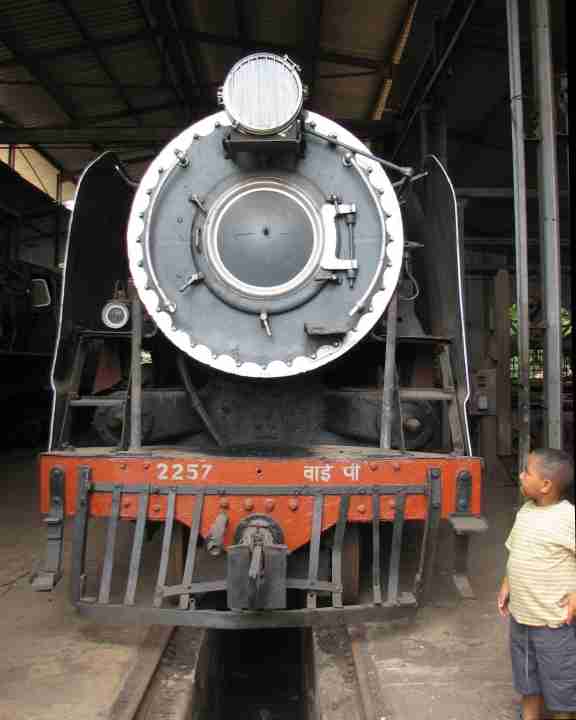
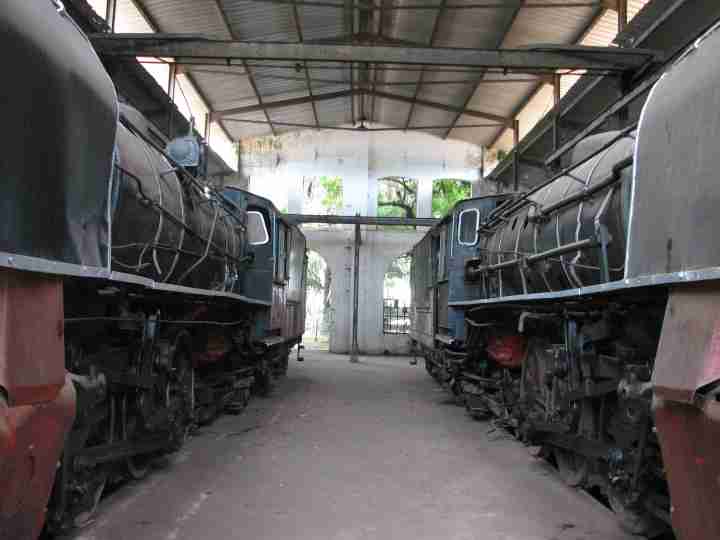
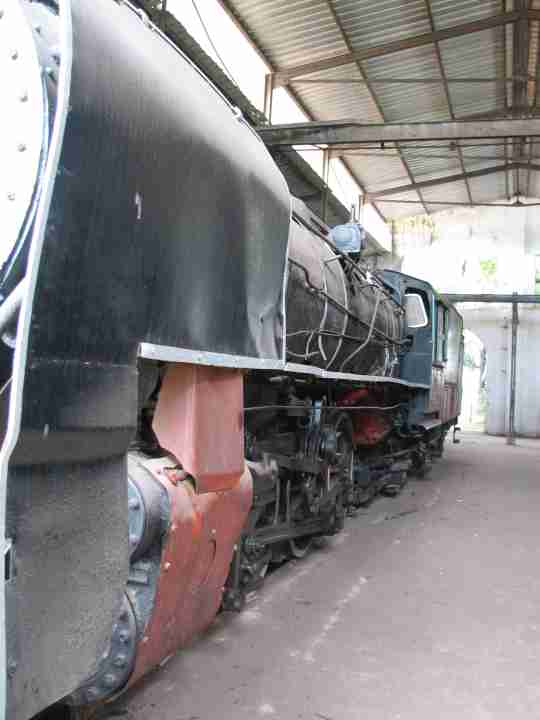
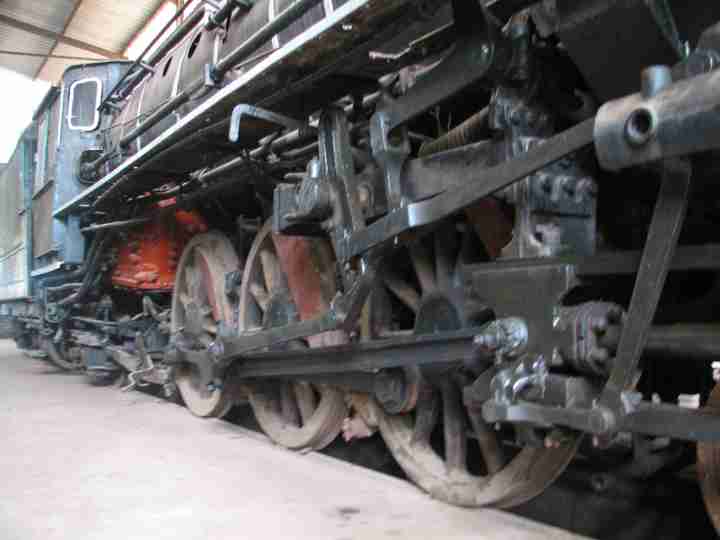
The above images were taken in July 2007 by Guy Catherine of Grand Popo,
Benin
These two locomotives are owned by Henry Posner of the
Railroad Development Corporation in the USA.
They were overhauled in India after being taken out of
service in the late 1990's .
Shipped to Lome, Togo in late 2000, they have been
stored in operational condition since that time.
Mr. Posner has agreed to their use in Benin under
certain conditions which are very achievable.
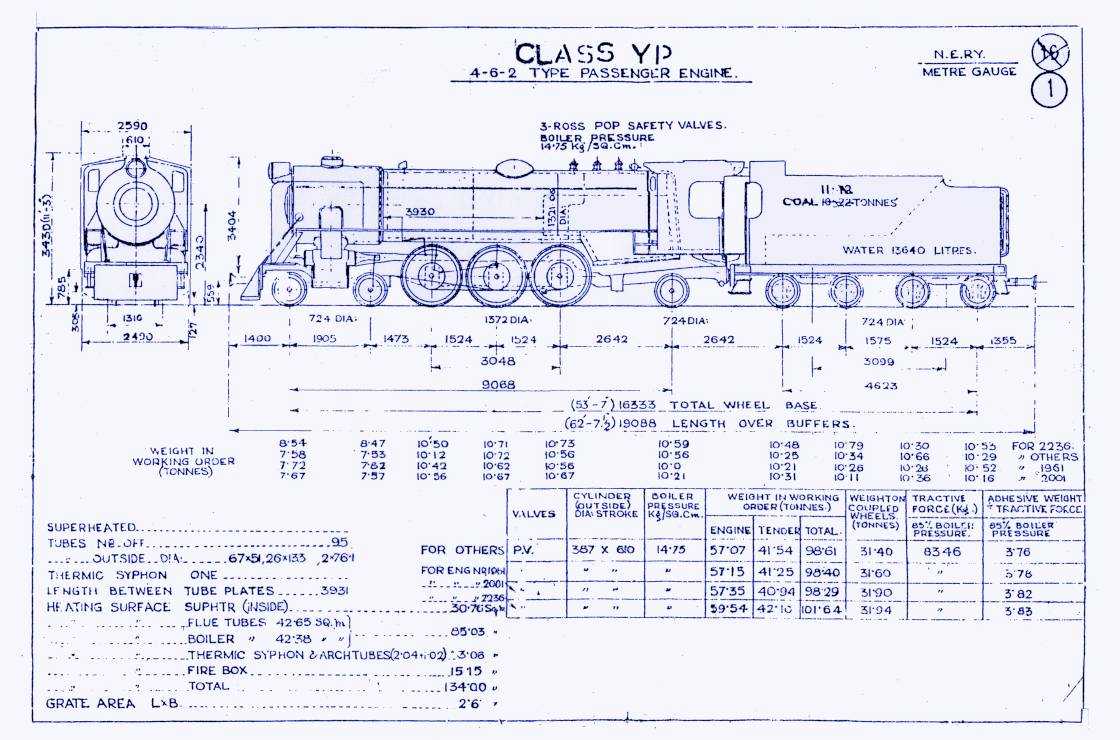
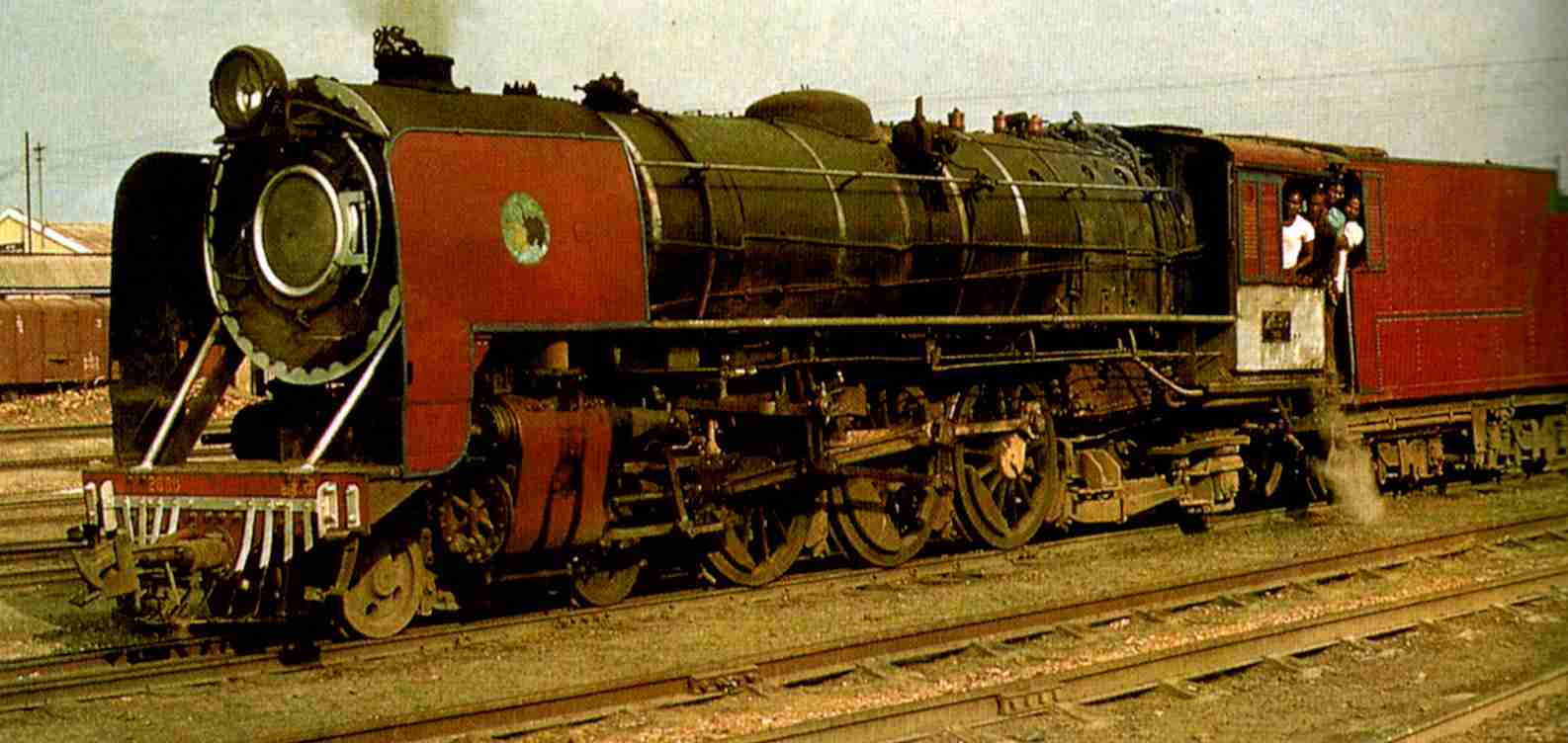
A YP at rest in the 1990's note the four person crew. Driver, two
fireman and a coal mover.
Brian Hollingsworth image
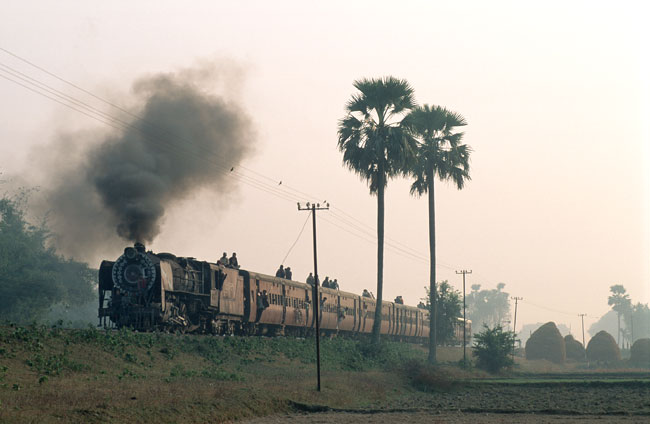
A YP on a typical train in India in 1997
Berndt Seiler image
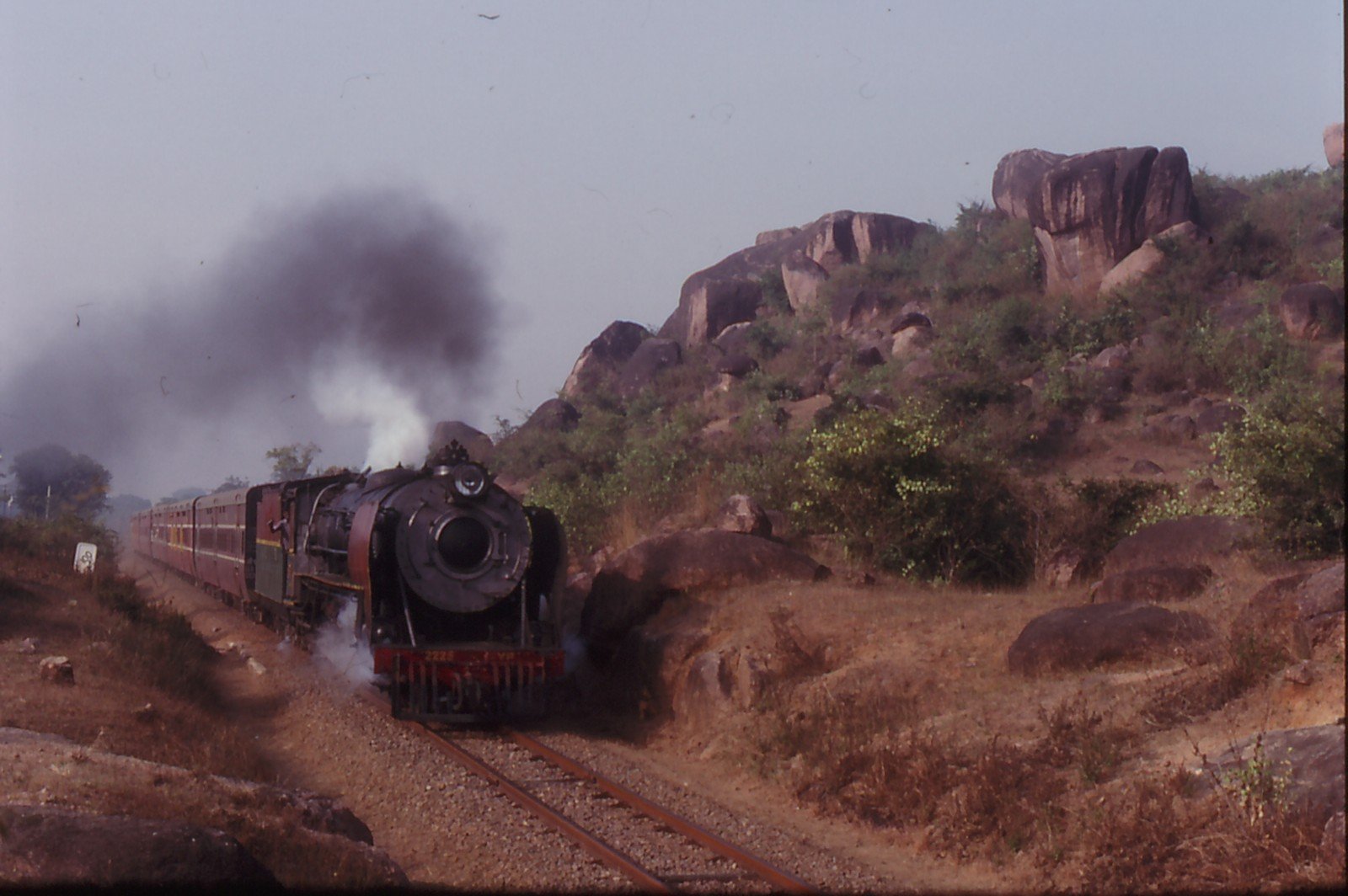
A YP at speed
Stuart Keen Image
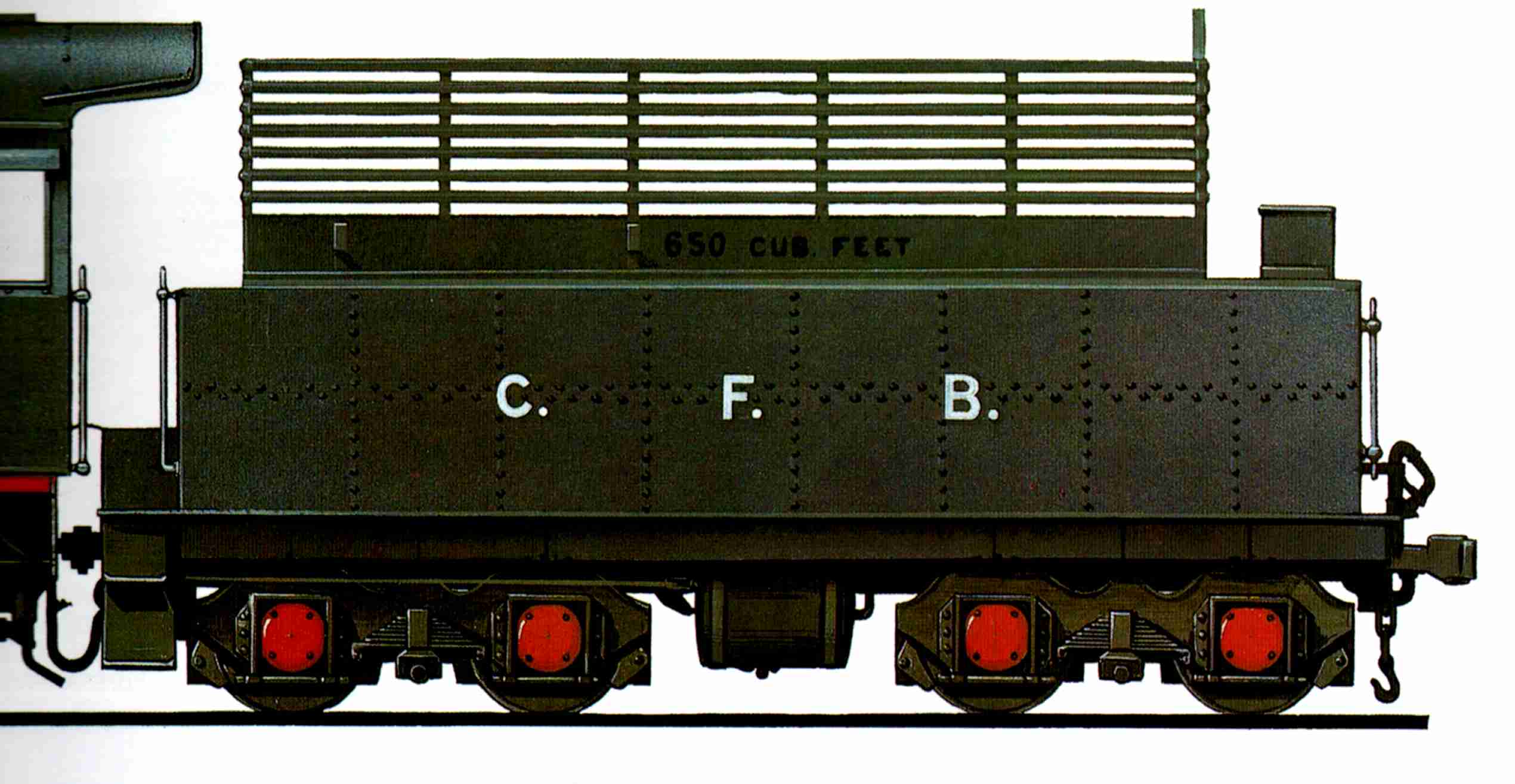
If the decision is made to burn locally grown
eucalyptus wood as opposed to using coal from Nigeria. A frame would be
built on the top of the tender to increase capacity as in this example
from the C.F.B. in Angola.
OCBN
The Railway of
Benin and Niger
Images taken in
the late 1990's
|
COTONOU STATION
|
Cotonou Main Station as seen from the access road
Alle Photos: P. Romen
|
.jpg)
|
.jpg)
|
.jpg)
|
|
Staff of the Cotonou-Parakou day train.
Right: The central tower of Cotonou station
|
.jpg)
|
.jpg)
|
Parakou bound train leaving Cotonou station
and yard.
|
|
COTONOU YARD
|
Diesel locomotive AA 82 shunting freight cars in
Cotonou's station yard.
|
.jpg)
|
Diesel locomotives on Cotonou depot.
|
.jpg)
|
.jpg)
|
.jpg)
|
.jpg)
|
Old and derelict rolling-stock located around Cotonou depot
|
|
COTONOU TO PARAKOU
|
En route the view from a northbound train.
All coaches are built by Soulé of France.
Below: Tchatchou station not far from
Parakou
|
.jpg)
|
.jpg)
Right: Two day trains crossing each other at a
wayside station
|
.jpg)
|
Parakou-bound train
|
.jpg)
|
|
PARAKOU STATION
|
.jpg)
|
Parakou suburbs
|
Parakou station is the northern end of the line. Freight to and
from Niger is switched between rail and road at this
location.
|
.jpg)
|
|
Track Maintenance
|
.jpg)
|
.jpg)
|
History

"Though it had two
separate railways, Benin (Dahomey) has the least well documented
of the French-built lines in West Africa. Both railways were
slow to be
built. The Central Dahoméy railway which started out from the
coast at Cotonou in 1908 took 12 years to reach Savé, some 250km
inland, though the terrain presented few problems for the
builders.
The line was
eventually extended to Parakou, about half way up-country in
1935.
The East Dahoméy line
started from the separate harbour at Porto Novo and stretched
only to Pobe. Although this terminus was close to Idago on the
Nigerian line, the difference in gauge ruled out any link
between the two.
The two Dahoméy
systems were joined in 1930 when the railways came under
Government control. The 19 steam locomotives of the central line
were then pooled with the 8 of the eastern line."
It is not clear when
steam ended in the country. As shown above, the Central Railway
now known as the OCBN remains in place and operational today.
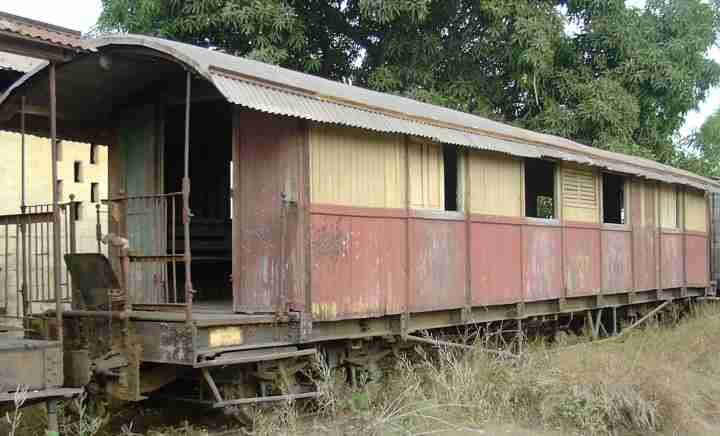
These 1914 built German passenger coaches are also stored in
Lome. There are three of them in similar condition belonging to
the Togo Railway not RDC.
It is possible they could be acquired to supplement or replace
the three small passenger coaches currently in use in Benin on
the existing tourist train.
The
former Benin Presidential coach is also under restoration.
Graham Roberts image
The tourist train in Benin is a project of
www.hotels-benin.com
.

|